

ASSIGNMENT 1 (INDIVIDUAL)
INTRODUCTION TO CULINARY SKILLS
Student
Name:
|
SITI
AISYAH BINTI AWANG
|
Student
ID :
|
00000102290
|
Course
Code :
|
TDC
101
|
Lecturer
Name:
|
Putra
Hamehady Bin Masbak
|
Date
Submit :
|
11
MARCH 2018
|


INTRODUCTION
Cooking is the art or practice of preparing edible food by applying heat
or combination select measured ingredient in an odered process. Cooking methods
and cooking techniques are the same concepts but different ways of handling. Cooking
method is something to follow the procedure to cooking and knowing about what
types of cooking such as Dry-heat
methods, Moist-heat method and
then the Combination methods. About
the cooking technique this is something how to control the stability users the
equipment or utensil and also the should to do and knowing how to prepare the
ingredients (Misen-place) and
have a unique ways of making the right fit for the individual during cooking.
HISTORY OF COOKING
TECHNIQUE

The longest known cooking technique is
the technique of burn so no one knows how ancient humans have discovered this
technique, but archeologists Harvard university say that ancient humans can
find it from when they eat dead meat in the forest fires.
Baking and roasting techniques on their
own fire can be found from the most isolated and primitive societies to modern
humans. However, it seems that the key to entering the phase of the other
cooking variants, appears when humans use clay for cooking utensils (cooked
pots). Based on the sources I have found, since the Neolithic era, humans began
to use pottery as part of simple kitchen utensils and cooking.
With the discovery of clay, as well as
with stone cooking techniques, humans find other ways to boil food, to roast
the meat, to the stage where ancient humans make the clay ovens.
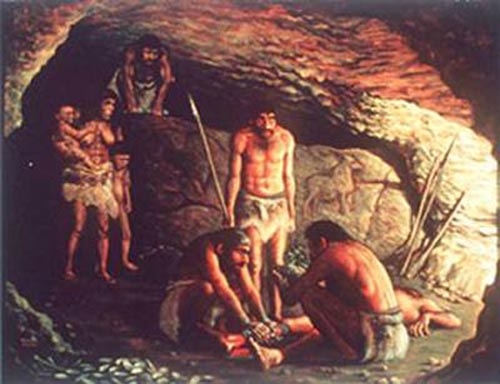


DIFFERENNTIATE BETWEEN
COOKING METHOD AND TECHNIQUE
COOKING
METHOD
Cooking method is that the chef should
follow the steps by step used in the recipe and the cooking method is also a
limited component and should be followed. Cooking method is something what we
should to do and we must knowing about types of food produce. There are three
part of combinations is dry-heat method,
moist-heat method and combination method.
1. DRY HEAT METHOD
/veggies-on-grill-2500-57ad0fd95f9b58b5c2469ffb.jpg)
Dry-heat methods
are those in which the heat conducted without moisture that is by hot air, hot
fat, hot metal and hot radiations.
Dry heat have a
2 categories with fat and without fat.
a) Broiling
Using the small quantity of fat and
using hot metal.
b) Grilled
Using the natural hot air and usually
used the stone and the others related.
c)
Roasting
Roasting
methods exist either by hot air (open fire) or hot radiations and it
rotate. What happen to the meat usually out of the meat is dry and inside
the meat is wet.
d)
Baking
Baking
is involved the food in lack solid structure. Cook in covered, at a temperature
is 375c at or below.
e) Frying

Saute,
shallow, deep and stir.
2. MOIST-HEAT METHOD
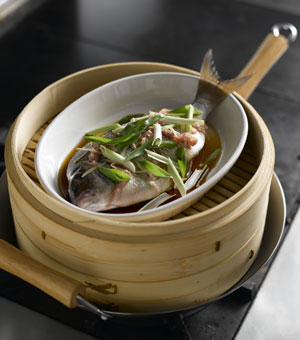
Moist-heat are those in which the heat conducted product by
water and
Water based such as stock, sauce.
a)
Poaching
Liquid moves slightly but no bubbles and
liquid temperatures in between 160-180F
71-82C. Use eggs, fish and fruits.
b)
Boiling
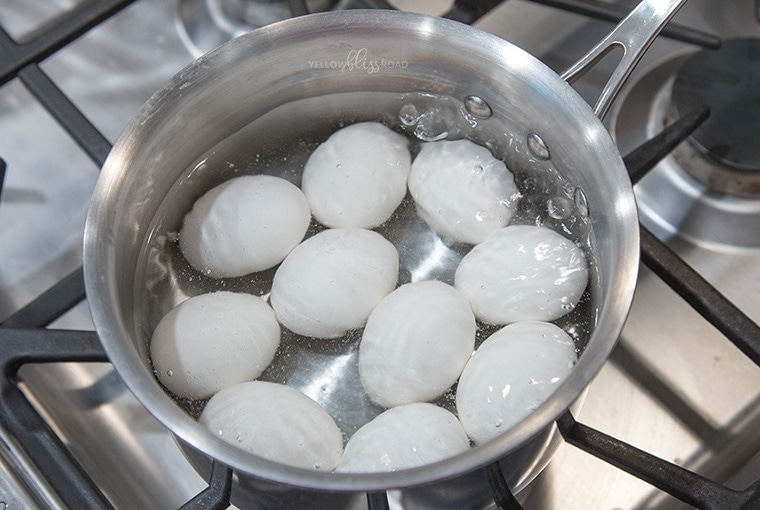
Large bubbles and rapid movement. Liquid
temperature in between 212F and 100C.
Uses pasta and vegetables and others.
c)
Simmering

Small bubbles break through the liquids
surface (Does not produce sound of boiling). The temperature at 185- 205f 85-96c.Use meat, stew, chicken.
d)
Steaming
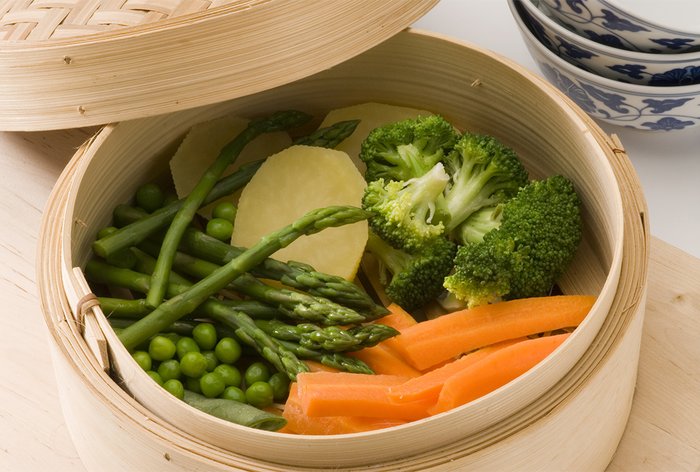
Food is in contact only with the steam
generated by boiling water (Maintain
for Flavor, texture, color & taste). Water temperature at 212f or higher
100c or higher. Use for the vegetables chicken, fish, Sell-fish.
e)
Blanching
Low heat to cook and put in ice for food
maintain the freshness.
3. COMBINATION METHODS

The combination methods have a 2 step:
First
step : Brown the main ingredients using
dry-heat.
Second
step: Complete cooking
by simmering the food in liquid.
a) Braising

Small of amount liquid.
b)
Stewing
Enough liquid to cover
the food.
COOKING
TECHNIQUE
:origin()/pre00/370e/th/pre/f/2015/345/6/1/6113ee4fceb98d73a6161f9a68d2a4fe-d9jqmkm.png)
Cooking techniques
are the special skills that a cook does in preparing, cooking and delivering
food. Good techniques also take into account the consumption of food and
cooking fuel economically, as well as food safety.
The techniques used
in preparing meals can affect any dish if not more than his own. For this
reason, many cooks believe it's more important to learn cooking techniques than
to learn to follow the recipe, knowing that certain techniques can improving
the quality of recipes.
Cooking
techniques as a different from the recipe in it. Recipes are a list of herbs
with method, while cooking techniques focus on how to prepare one of the items
in the recipe list for the recipe (eg
chopped onions) or there are methods used to cook the dishes available and the
method ends itself, while cooking techniques (eg cutting onions) can be moved from recipes to recipes and can
even be used without recipes. The experienced cooks at home tend not to use
recipes, and instead they are based entirely on their cooking technique
knowledge.
A BACKGROUND STUDY ON HOW THE COOKING TECHNIQUE OCCUR IN OUR DAILY LIFE
BASIS.

Cooking is one of the arts, in terms
of social science, technology and food preparation to be eaten either without
fire or vice versa. Cooking techniques and culinary ingredients vary around the
world, from baking on open fire to using the electric stove to bake. A variety
of ovens, reflecting the diverse and unique traditions, trends and traditions
of nature, economy, and culture. The way or type of cooking also depends on the
skills and type of training cooked by a cook.
Cooking is also a daily basic routine by
humans performed in their own home as well as, for chefs and professional chefs
at restaurants and other food restaurant establishments. Cooking can also occur
through chemical reactions without the presence of heat, as in ceviche, a
traditional South American meal where fish are cooked with lemon acid or lime
juice. As I know in Asian, my country and state where I come from where a group
or Sabah community used the same technique to emphasize lime or lemon as the
main ingredient of cooking without using heat. The dishes are included with Seafood
such as fish or squid the namely food is Hinava it so Popular in my state
because Hinava is a unique food.
Providing food with
heat or fire actually is a unique activity for humans. It may have started
about 2 million years ago, although archaeological evidence for it reached no
more than 1 million years ago. The development of agriculture, trade and
transportation between civilizations in different areas offers many new cooking
ingredients. New inventions and technologies, such as the creation of pottery
for holding and boiling water, expand cooking techniques. Some modern Chefs use
advanced scientific techniques for food preparation to further enhance the
flavor of the presented dish.

/ceviche-2500-56a20fb45f9b58b7d0c626a0.jpg)

5
TYPES OF COOKING TECHNIQUE AND ELABORATE THEM
1.
Braising cooking
Most braising follow the same basic
steps. Foods to be boiled (meat, vegetables, mushrooms, etc.) are first grown
to grow its surface and improve taste. If the food does not produce enough
liquids, a number of cooking fluids that often include acid elements such as
tomatoes, beers, balsamic vinegar, wine added into the pot, often with stock.
Classical techniques are carried out by cutting the meat as a whole, and the
energetic liquor will cover two-thirds of the food in a pan. The dish is then
closed and cooked with very low spices until the meat becomes soft so that it
can be cut with only a soft pressure from the fork (rather than a knife). Often
cooking fluid is complete to make sauce or gravy too.
Sometimes food that has high water
content (especially vegetables) can be cooked in their own juice, making the addition
of liquids unnecessary. Successful fruit flavors the flavor of cooked food with
cooking fluids. This cooking method dissolves meat collagen into gelatin, which
can enrich and thicken the fluid. Braising is economical (as it allows the use
of difficult and inexpensive wounds), and is efficient (as it often allows the
entire dish to be prepared in one pot or pan).
2.
Red cooking

Red cooking, also called Chinese
stewing, red stewing, red braising and flavour potting, is a slow braising
Chinese cooking technique that imparts a red colour to the prepared food.
There are two types of red cooking:
- Hongshao traditional Chinese food Hóngshāo can be done in less than 20 minutes and usually does not require much water.
- Lu actually lu usually requires prolonged cooking of up to several hours and the items must be submerged in the cooking liquid.
Red cooking is popular throughout most
of northern, eastern, and southeastern China. The name is derived from the dark
red-brown colour of the cooked items and its sauce.
3.
Backwood Cooking

Backwoods cooking is a method of cooking
without the use of kitchen implements. It commonly takes place in the
backwoods, often in combination with wild or conventional camping. Some
variants of backwoods cooking allow the use of items of cookware such as a
cooking pot.however there are many recipes without any. Some backwoods
alternatives to cookware include: aluminium foil, fruit skins and heated stones.
Traditionally backwoods cooking takes place over a wood burning fire because
wood is the most available fuel source in the backwoods. As a result, some
recipes include information about the intensity of the fire to be used.
Backwoods cooking is widely practiced
within the Scouting movement. While it is most associated with scouting today,
the term "backwoods cooking" pre-dates Scouting by at least 25 years.
Within scouting it may also be known as "lightweight cooking," which also
have a focus on using aluminum may foil for cookware for much lighter weight
cooking.
Scouts around the world take part in
different backwoods cooking competitions. These competitions are often local in
scope, group or district competitions, but some are held by national scout
associations.
4.
Carryover cooking
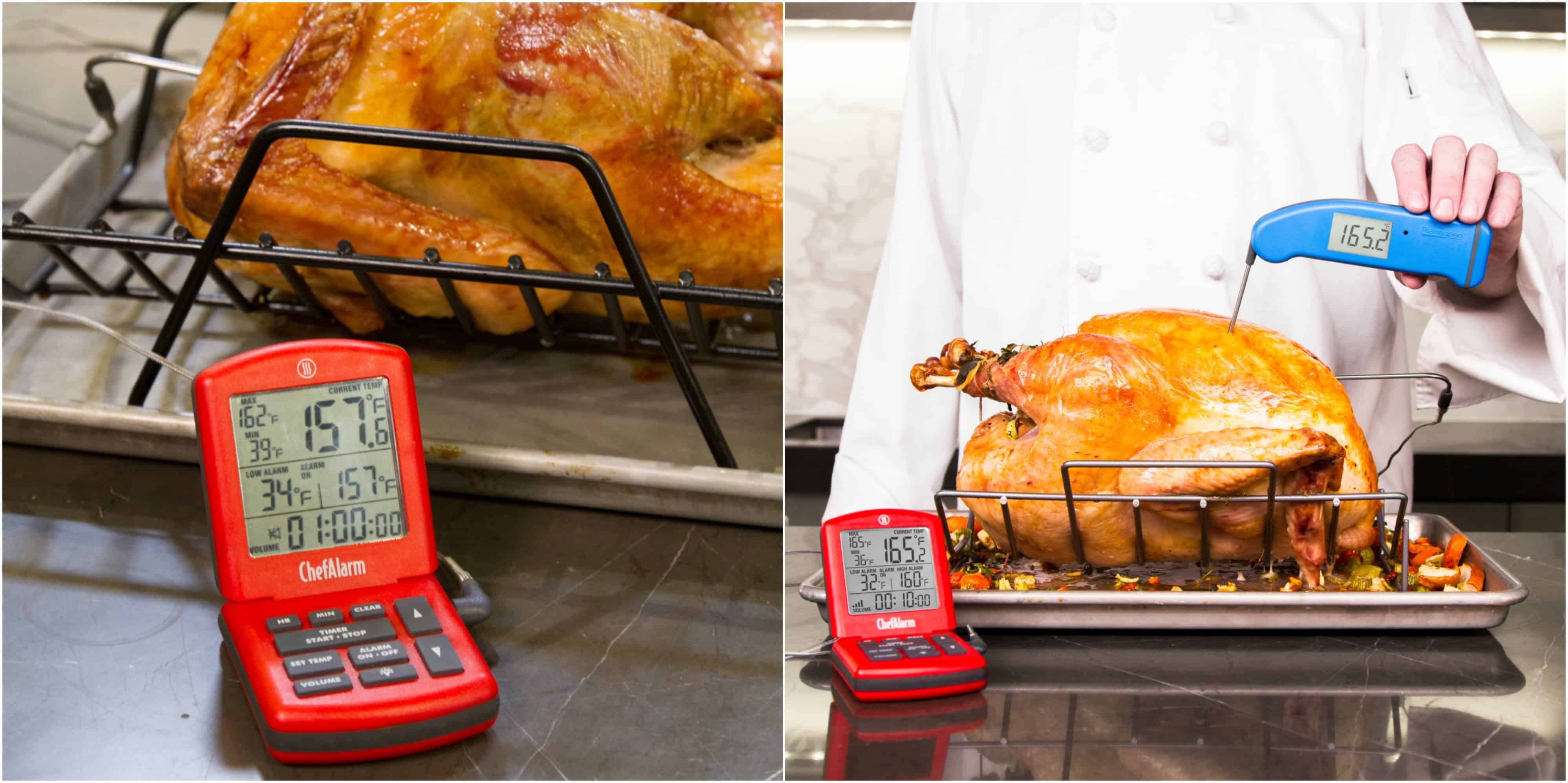
Carryover cooking (sometimes referred to
as resting) is the phenomenon that food retains heat and continues to cook even
after being removed from the source of heat. Carryover cooking is often used as
a finishing step in preparation of foods that are roasted or grilled, and must
be accounted for in recipes as it can increase the internal temperature of
foods by temperatures between 5 and 25 degrees Fahrenheit (3–14°C). The larger
and denser the object being heated, the greater the amount of temperature increase
due to carryover cooking.
Resting, when used as a synonym for
carryover cooking, also refers to the process of allowing the liquids in meats
to redistribute through the food over a 5- to 20-minute period. This allows for
a more flavorful and juicy finished product.
5.
Coddling cooking
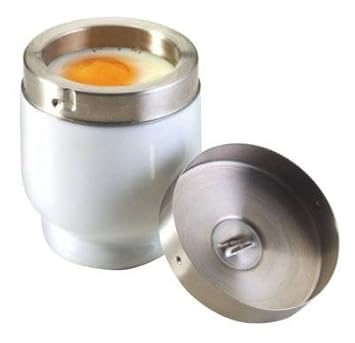
In cooking, to coddle food is to heat it
in water kept just below the boiling point. In the past, recipes called for
coddling fruit, but in recent times the term is usually only applied to coddled
eggs. The process is either done in a regular pan or pot, or through the use of
a special device such as an "egg coddler" (originally known as a Pipkins).
The word coddle evolved from the name of
a warm drink, "caudle", and ultimately deriving from the Latin word
for warm drink, caladium.
Comparing the coddling cooking technique
to boiling when it comes to whole eggs, the process of coddling takes a longer
time due to the use of a lower cooking temperature, but it produces a more
tender egg.
CONCLUSION

What I found out from this assignment
actually I got a more knowledge for me as a student to improve my career in the
culinary world. When I complete this task what I found, how many of the best
techniques I can use for my daily basic life and there is also have a unique
idea and history where the culinary world begins. Not only that, but in this
assignment I got lots of useful information to improve my identity as a chef
one day.
.gif)
Ulasan
Catat Ulasan